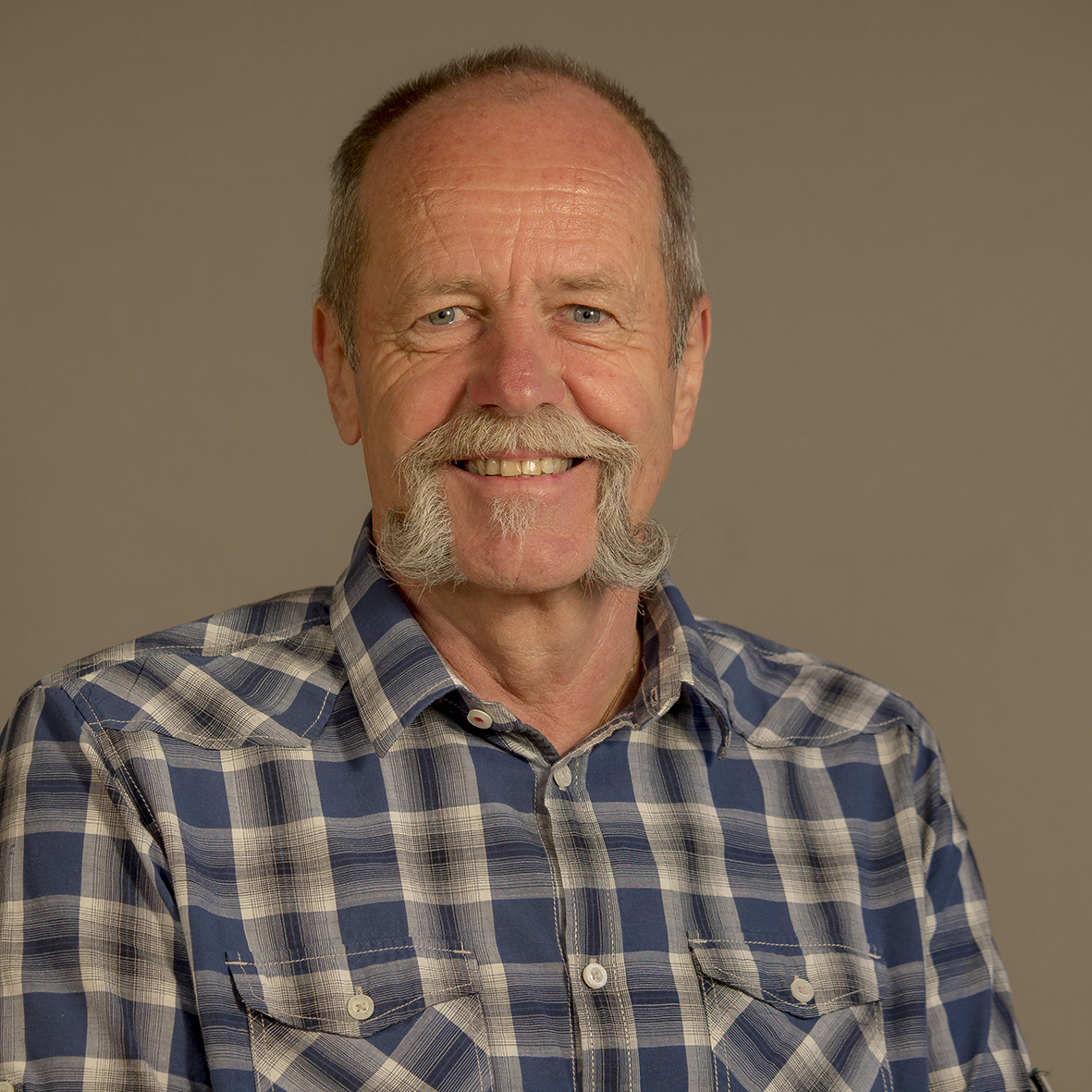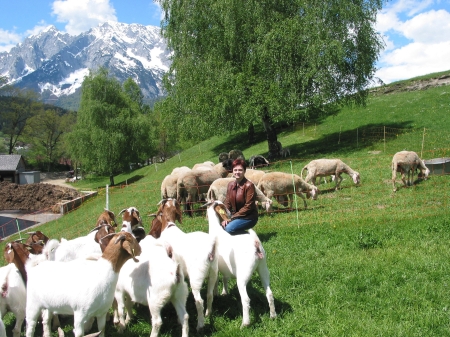Goats are mixed eaters, meaning they also chew on bushes and trees, thereby helping to keep the cultivated landscape open. Sheep, on the other hand, are grass eaters. The effects of different pasture systems (standalone pasture, paddock pasture) in comparison to gentle mechanical care should be investigated. Another aspect is the extent to which grazing with goats and sheep has an influence on hunting.
Former alpine pasture areas that have not been grazed or mown for many years are to be grazed with Boer goats and brown mountain sheep. Grazing steep areas with goats and sheep has the advantage over grazing with cattle that there is less or no damage caused by trampling. Goats are mixed eaters, meaning they also chew on bushes and trees, thereby helping to keep the cultivated landscape open. Sheep, on the other hand, are grass eaters. The Boer goat is a breed of meat goat that is not milked and is therefore particularly suitable for landscape maintenance. The occupancy can be controlled in such a way that there are no fawns with the mothers during the alpine grazing period and therefore the nutrient requirements of the goats can be met without additional feeding. Likewise, the brown mountain sheep is aseasonal and occupancy is controlled in the same way as goats.
The effects of different pasture systems (standalone pasture, paddock pasture) in comparison to gentle mechanical care should be investigated.
In parallel to grazing or mechanical care, long-term improvements in yield and feed value of the affected areas should be achieved by sowing site-appropriate forage grasses and herbs.
The aim is to show how grazing with goats and sheep affects the plant population compared to mechanical care and what animal performance can be achieved with the different grazing systems.
Another aspect is the extent to which grazing with goats and sheep has an influence on hunting.
In Austria, the services of sheep and goats with regard to landscape management have not yet been given enough attention. The focus is on producing high-quality food. The landscape conservation performance of goats and sheep should be closely examined. In Germany, landscape management with sheep and goats is a reality in various projects (Eckert, 1993; Brühne, et al. 2004).
For the period 1999-2003, according to the Green Report 2000 and 2004, the decline in green fodder areas in Austria was 21.4%, with 76% of this decline being at the expense of alpine pastures and mountain meadows. Grazing steep areas with goats and sheep has the advantage over grazing with cattle that there is less or no damage caused by trampling. Goats are mixed eaters, meaning they also chew on bushes and trees, thereby helping to keep the cultivated landscape open. Sheep, on the other hand, are grass eaters. The Boer goat is a breed of meat goat that is not milked and is therefore particularly suitable for landscape maintenance. According to Stahmann (1994), Boer goats are best suited to maintaining and keeping open lean grassland (especially where there is bush cover). This experiment will show whether the Boer goat is also suitable in alpine areas.
In connection with the grazing of alpine areas with sheep or goats, there are always points of contact with hunting. In order to promote mutual cooperation, the advantages and possible disadvantages for both agriculture and hunting should be pointed out and a common solution should be found. Furthermore, nature conservation is also integrated into the project.
Experimental plan: Division of the experimental areas
|
Mechanical care |
Paddock goats |
Goats grazing
|
Paddock sheep |
Sheep grazing |
|
Paddock goats |
Paddock sheep |
|||
|
Paddock goats |
Paddock sheep |
For the experiment, 20 Boer goats and 20 brown mountain sheep from the LFZ Raumberg-Gumpenstein stock or purchased animals will be used. The animals are sheep and goats without lambs. With a stocking of 0.5 GVE/ha, this results in an area of 3 ha per test group. The pasture areas are fenced in with electric fences. The duration of grazing on the paddocks is 14 days, which means that each paddock is grazed 2 to 3 times, depending on the vegetation. The main growing season is June to August; depending on the vegetation available, the duration of grazing can be extended. The paddocks are divided horizontally to the altitude; the height of the test areas will be between 1500 and 2000 m. As a comparison to animal care, an area is cared for mechanically by hand.
At the start of the experiment, an analysis of the site conditions is carried out. All areas will be sampled and a weather station will record the other site parameters. A precise survey of the plant population of each plot and a general description of the area are carried out at the beginning of the project and after each operation has been completed on all areas. Permanent observation areas are set up on each sub-area and all short- and long-term changes in plant populations are documented. If possible, a yield estimate and a nutrient analysis of the plant population should be carried out.
At the end of the first year of the trial, all areas are sown with a seed mixture appropriate to the location in order to achieve a long-term improvement in the plant population and thus in yield and feed value. The uniform technique used is manual sowing in late autumn (so-called dormant sowing).
The pasture care and other recultivation measures to be implemented in the coming experimental years must be flexibly adapted to the emerging situation.
In order to compare the costs, time and material expenditure as well as to estimate the success that can be achieved with other methods, mechanical recultivation methods (manual turning and - if the terrain allows - the use of a milling machine) are used on another plot. These areas are also sown in autumn with a seed mixture that is suitable for the location.
Further information on project management can be found in the database for research and sustainable development (Dafne) -> Link







